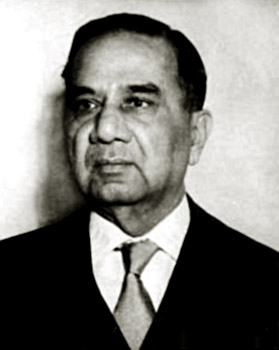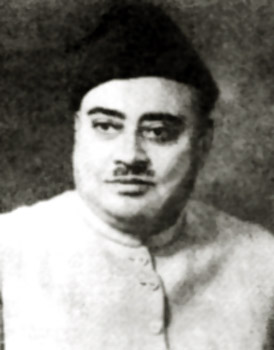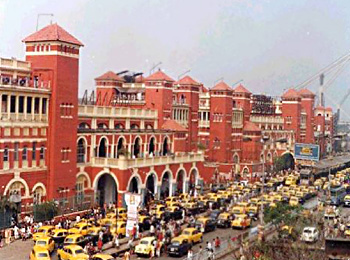 Great Calcutta killing had been the severe face of the communal tension that prevailed in India since the last February. Anti governmental feelings as well as anti-Congress feelings were being encouraged for long which was mainly intended to exaggerate the tense atmosphere that prevailed within the Hindus and the Muslims in parts of India.
Great Calcutta killing had been the severe face of the communal tension that prevailed in India since the last February. Anti governmental feelings as well as anti-Congress feelings were being encouraged for long which was mainly intended to exaggerate the tense atmosphere that prevailed within the Hindus and the Muslims in parts of India.
The communal tension mainly struck the area was Bengal where the composition of population was more provoking. The province of Bengal was mainly populated by 54 percent of Muslims as against 44 percent of Hindus who mainly inhibited the eastern part of the province. As a result the city of Calcutta (now Kolkata) was most affected. Due to the composition of this area this was the only province in which the Muslim League was at power against the other national parties like the Indian National Congress and the Hindu Mahasabha along with the Anglo Indian group which supported the coalition of British government. Among these the group of Hindu Mahasabha was supported by the group of rich Marwaries who resided mainly in Kolkata controlling the economy of Bengal. Overall the inhabitants of Kolkata comprising 73 percent of Hindus and 23 percent of Muslims had already turned into two antagonistic communal groups who eagerly waited for a clash.
On the day of 16th August the protest triggered massive riots all over the city which took a toll of 4000 lives within 72 hours and left 15000 injured while about 100,000 people being dislodged from their houses.  Stabbing, killing, arson, criminal assaults on women continued for next four days. Neither the police nor the army was called for rescue, adding to it Huseyn Shaheed Suravardy, the then Muslim league leader and Bengal`s Chief Minister requested governor Burrow to declare a public holiday to boost the riot situation in the area.
Stabbing, killing, arson, criminal assaults on women continued for next four days. Neither the police nor the army was called for rescue, adding to it Huseyn Shaheed Suravardy, the then Muslim league leader and Bengal`s Chief Minister requested governor Burrow to declare a public holiday to boost the riot situation in the area.
The programme included random Hartals on number of places in the city of Kolkata and processions would begin from areas like Howrah, Hooghly, Metiabruz and 24 Paraganas and would join together at the foot of Ochterlony Monument (now known as Shaheed Minar) which will be addressed by Huseyn Suravardy. The Muslim League workers were advised to place at least three workers to guide and organise the protesters from all the mosques of Kolkata. Also special prayers were organised by the mosques after the Jumma prayers on Friday to preach the common man about the value of free Muslim nation.
The meeting which was supposed to begin at 4 p.m. at the monument had attracted a huge crowd from all corners of the city. It was reported that the men were equipped with lathis and iron bars. The number of people attending ranged from 30,000 to 500,000. The meeting was mainly addressed by Suravardy and Khwaja Nazimuddin, who stated that it was only Muslims who were being attacked and that they were only at defensive. Suravardy till then had made all efforts to keep the police as well as the army away from the situation. At the same time it was reported that even the messages carried to the authorities was also in Urdu.  The most affected areas included the south Park Circus, the East CIT road, the North Vivekananda road and the west Strand road. The estimated casualties had been recorded as 4000 deaths with 100,000 injured. Approximately the death toll increased unto 7000-10,000. Finally on 21st August 5 battalions landed along with 4 battalions of Ghurkhas soldiers which brought the riot to an end.
The most affected areas included the south Park Circus, the East CIT road, the North Vivekananda road and the west Strand road. The estimated casualties had been recorded as 4000 deaths with 100,000 injured. Approximately the death toll increased unto 7000-10,000. Finally on 21st August 5 battalions landed along with 4 battalions of Ghurkhas soldiers which brought the riot to an end.
Aftermath of Great Calcutta Killing
Reaction of the riots was visible as during this time many people evacuated the city .The areas like Howrah station and Hooghly River was full of evacuees who were escaping from the on going man slaughter in the city of Kolkata.
There was heavy criticism of the Chief Minister for being partisan; the Congress leaders expressed their sorrow and condemned the action of Muslim League which sowed the seeds of Partition of India. The Muslim League, on the other hand, with its projection of power was able to frighten the Congress who now wanted to come to mediation with the League for both the creation of Pakistan as well as independence of India.
Alongwith Kolkata remnants of these riots rolled up to surrounding areas of Noakhali, Bihar and rest of India including areas of United Provinces (now known as Uttar Pradesh).
Thus, the horrified experience of the riots faced during this period had rattled the Indian politics forever .The mass scale men slaughter during the riots had such effect on both the Hindus as well as Muslims that no other riot of the same scale took place for next 50 to 60 years. With this new methods of politics



















